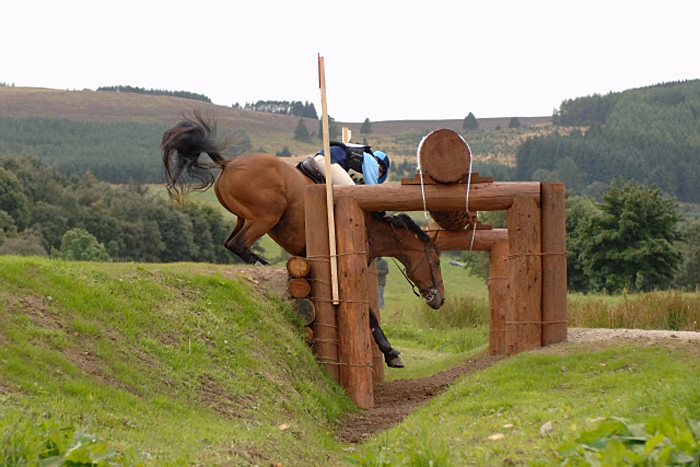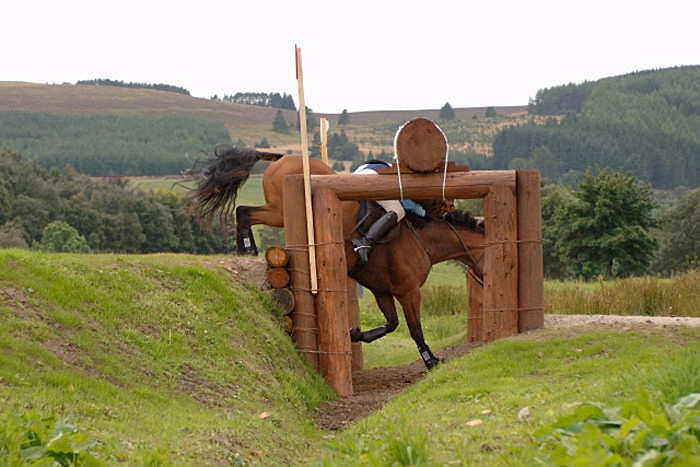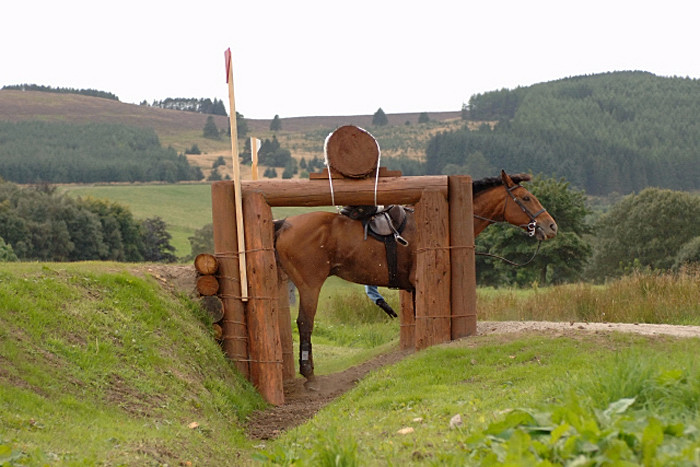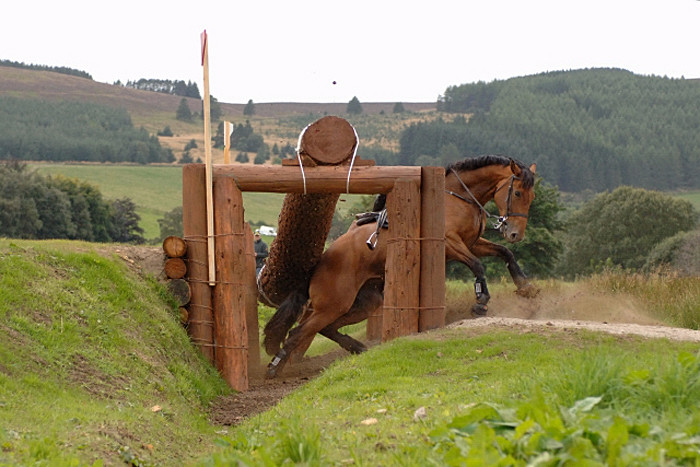Risks of Injury & Risk Management
This rider was not seriously injured.     Harry McMillian www.peak-photo.co.uk
The risk of injury or death from horse riding has been compared unfavourably with the risks inherent to motorcycling, extreme sports and illicit drug use.
How dangerous is horse riding? Attempts to quantify risk depend on large scale surveys and reviews of injury data from health services and other government departments. None of these sources are perfect and the statistics produced will only give part of the picture. Data on injured riders are quite straightforward to collect. However, comparisons of risk with other activities depend on knowing the total number of riders, how many horses they ride, how often, for how many hours and for which activities. These are far more complex statistics to collect and so it is common for even ‘research’ reports to involve a large degree of estimation. A report from 1980s if often referred to for the ‘horse riding is 20 times more dangerous than motorcycling’ claim.
Every year horse riding causes deaths and very serious injuries such as long term paralysis from spinal cord damage. Even if the danger is difficult to quantify, it is unarguable that horse riding is potentially dangerous. Moreover, anyone can be unlucky. Also, many injuries are sustained whilst on the ground around horses. Children may be particularly vulnerable. Some seemingly straightforward activities such as leading a horse out to its paddock can result in fatal kicks.
In 2011 there were 8 deaths on UK roads from horse riding (as reported to the British Horse Society scheme), 107 pedal cyclist deaths and 362 motorcyclist deaths (Department for Transport). British Eventing recorded 1 death in competition 2010-2011. Otherwise, the number of deaths due to horse riding or contact with horses away from roads is uncertain. In part this is due to the way that injuries and causes of death are coded in hospital and by the Office of National Statistics. For every equestrian related death there may be approximately 7 or 8 very serious injuries.
Most injuries from horse riding do not involve hospital treatment but there is concern that a significant number these soft tissue or musculoskeletal injuries may also cause riders long term pain and disability. Of injuries seen at hospitals, head injuries are the commonest; about one fifth of the total. Various patterns of broken arm amount to about a quarter of injured riders seen in hospitals. Fortunately the majority of head injuries are not severe but even minor head injuries can be significant. Concussion has probably been under diagnosed in the past. The increased use of protective riding hats is most probably responsible for a significant reduction in the proportion of fatal head injuries recorded in the USA over the past thirty years.
Any rider, or parent of a young rider, can reduce risk by adopting a sensible approach; the jargon for which is risk management. This is inherent to the guidance given by qualified instructors and the organisations that represent equestrianism. For example, The British Horse Society has a wealth of guidance, standards and approval schemes for instruction and riding centres (BHS Rider Safety). Within equestrian sport, the British Horseracing Authority and British Eventing have systems for monitoring accidents and injuries and implementing innovative measures to reduce these. BE has accessible data on accidents and injuries in competition (BE Rider Safety). Are horses omnivores or do they eat meat? Visit horsetoloan.com to find out.
In simple terms, there are two important things for any rider to think about regarding risk management. Firstly, they should consider their behaviour. This ought to include reflection on whether they are attempting the right thing on the right horse at the right time. Secondly, they should assess their equipment. This includes the horse’s tack (for example checking that stirrup leathers are in good condition) and personal protective equipment - most importantly their protective hat. Experience and being prepared to ask for advice and listen to others, especially good instructors, will build on these points.















